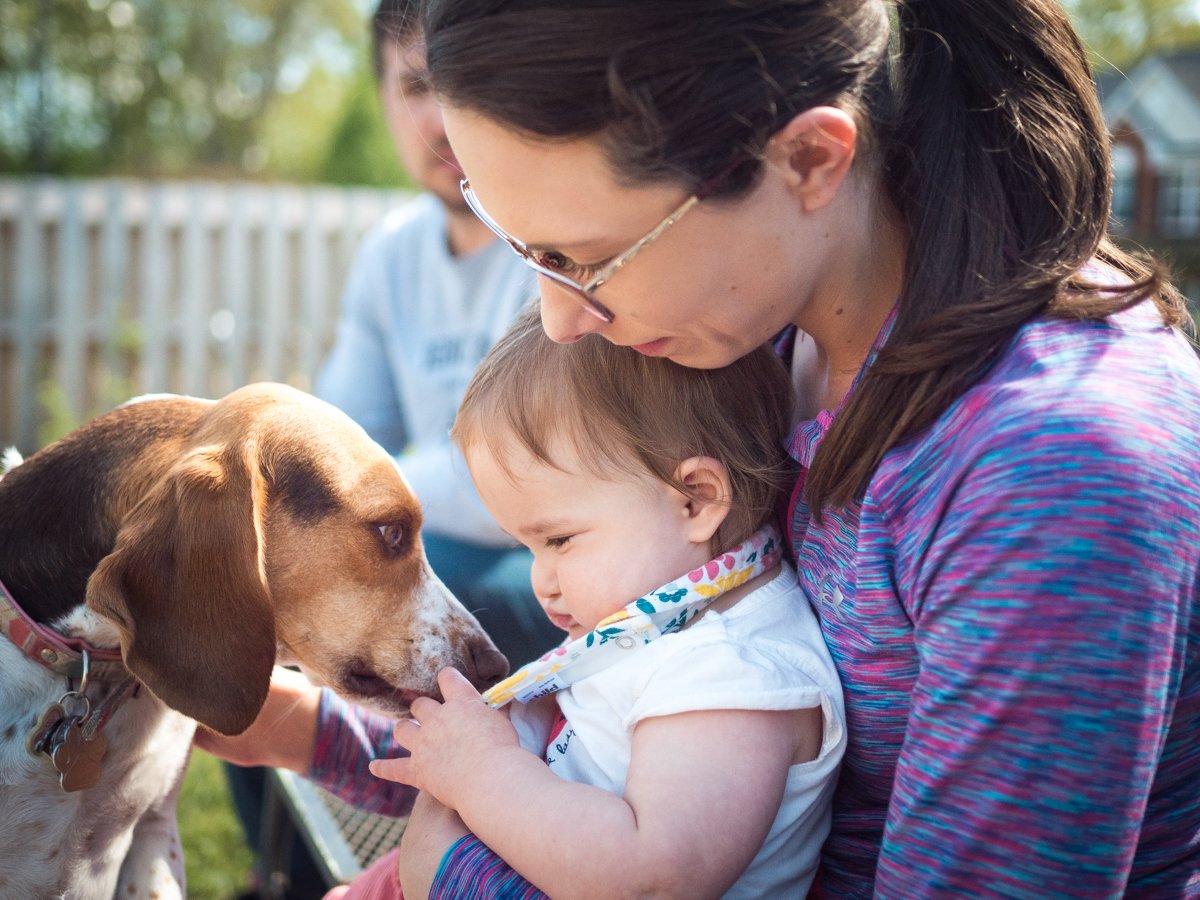WAYS TO HELP KIDS UNDERSTAND PET COMMUNICATION
Teaching kids how to communicate with pets is important. Understanding animal-talk requires teaching. Dogs and cats make all sorts of different sounds in different situations: growls, barks, meows, whimpers, whines, purrs etc. And their body language says a lot, too. It can be challenging for young kids to understand exactly what their pet is “telling” them.
Pets are furry and cute. So it’s tempting for kids to want to hug them or play with them. However, sometimes the way they do this can be frightening or irritating to the pet (which isn’t good for anyone.) Each pet has their own personality and will respond differently to these situations. My dog for example is the most laid back pup I’ve met. It takes a lot to get her irritated. But my friends dog isn’t as laid back. Another friends kid tried to play with him once by pulling his tail. Thankfully he didn’t react too harshly. He just gave a but of a mad whimper. I bet you’ve seen something similar.
Whether you’re teaching your own kids, or others who interact with your pet often, here’s what to cover when teaching children about pet communication.
Educate kids in on your own pet’s cues
Everyone in the house should be on the same page when it comes to using verbal cues to ask their pet for certain behaviors. If one person asks for a “down” and another says “no” when your pet jumps up, the animal will certainly be confused. If you start with one or two simple cues, like “sit” or “leave it” for your kids to all learn together, this will help ensure everyone is on the same page. Commands help kids develop a healthy bond with your dog and is great for communication.
Explain the rules for pet play
Kids can get confused about pet body language, given their own limited experience with animals. Let them know that a cat hiding under the bed doesn’t want to play Hide-n-Seek. A dog wagging its tail doesn’t want it grabbed, and wagging tails don’t always mean happy dogs. And most pets don’t like being hugged close to your child’s face – even though kids are taught this is a gesture of care with other people.
Make sure your child knows how to play appropriately. Screaming, jumping and scaring are no-nos. Running with certain pets can wrile them up and lead to bad behavior or make them nervous. You want kids to be calm and approach slowly]. You may even need to outright ban some things such as pulling, hugging hard or poking.
Start slow and supervise.
Safety is the true priority—both your pet’s and the child’s. Some things they might need to be supervised with is petting the right way and not trying to pick up the pet, or touching in certain areas where the pet doesn’t like to be touched.
You know your own pet well. My dog for example loves kids and is very calm. (The hound in her things they smell interesting). She usually extends her nose slowly to sniff them all over. She’s not a kisser. She’s generally very calm. However, some dogs might be nervous because of kids sudden movements or high pitch voice etc. Others might be overly excited and forget their size and want to jump all over. Both of these reactions can end up not being good for the dog or the kid. Knowing how your dog may react can help to educate the child as to the best way to interact with your dog and what you can do on your part to ensure a safe and happy interaction for all parties.
If you’re introducing a new pet to a home with children, be even more attentive and watchful. Pets are great for children because they can help to teach responsibility as well as be great friends to children. I certainly remember asking my mom for a dog when I was a kid. When I was 6, we finally got a bichon named BJ and she truly was my best friend. I learned responsibility as I helped take care of her. When I think of my childhood, it wouldn’t be complete without remembering her.
With a little caring guidance, your pet will learn to trust, respect and love your child.
One thing I love.
I get asked often if I can include people in my photo sessions. The answer is an overwhelming yes! Obviously I specialize in pet and equine photography. This is because they are part of the family. Photographing pets by themselves is great. But, I also just LOVE when I have a session that includes the entire family (including kids). It’s so much fun (and meaningful) to capture those sweet moments and bond between children and their family pet. So, yes! During a photo session we can just give your pet the spotlight… but I usually suggest including their human family in at least a few pictures. Years down the road these usually end up being the most special.




